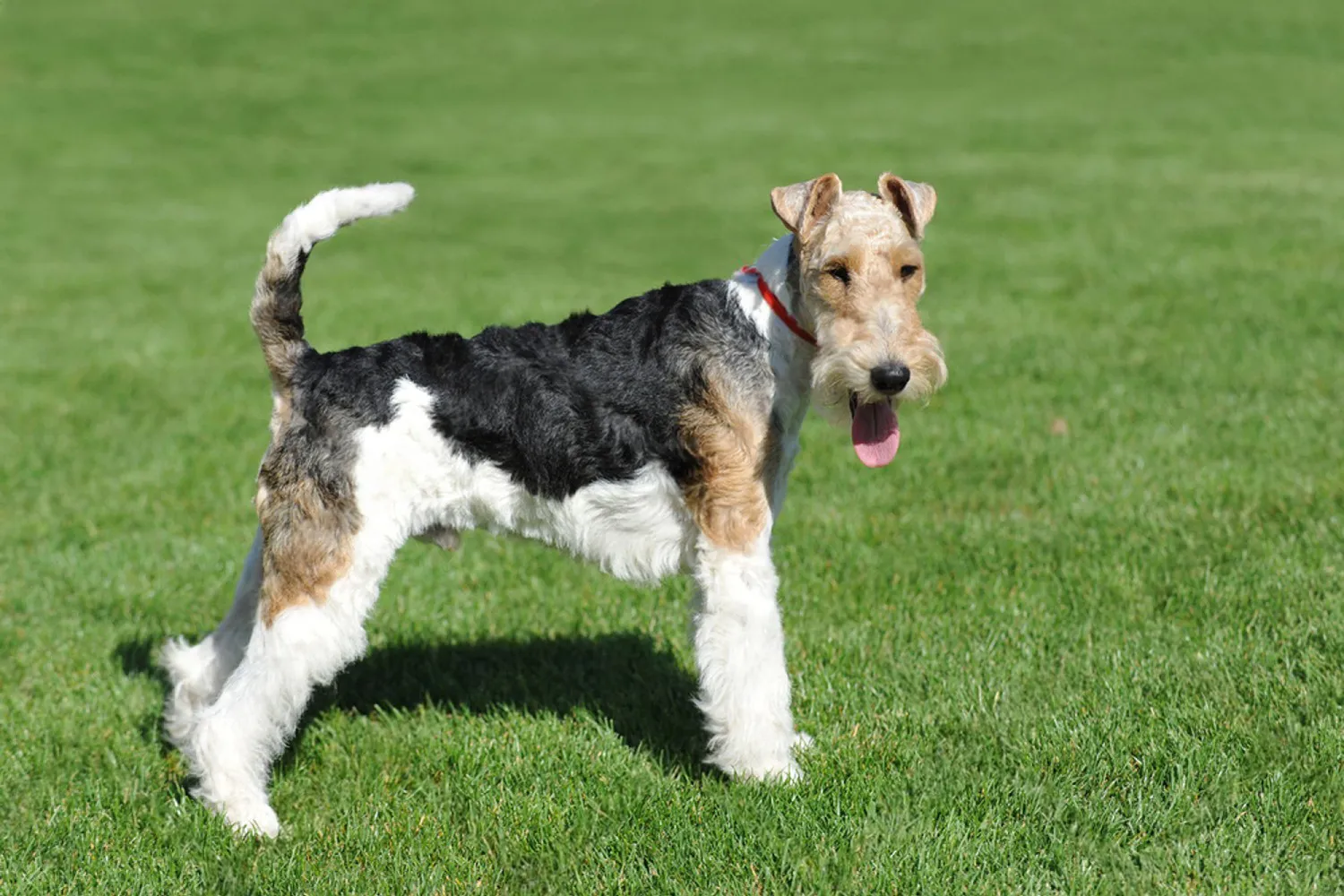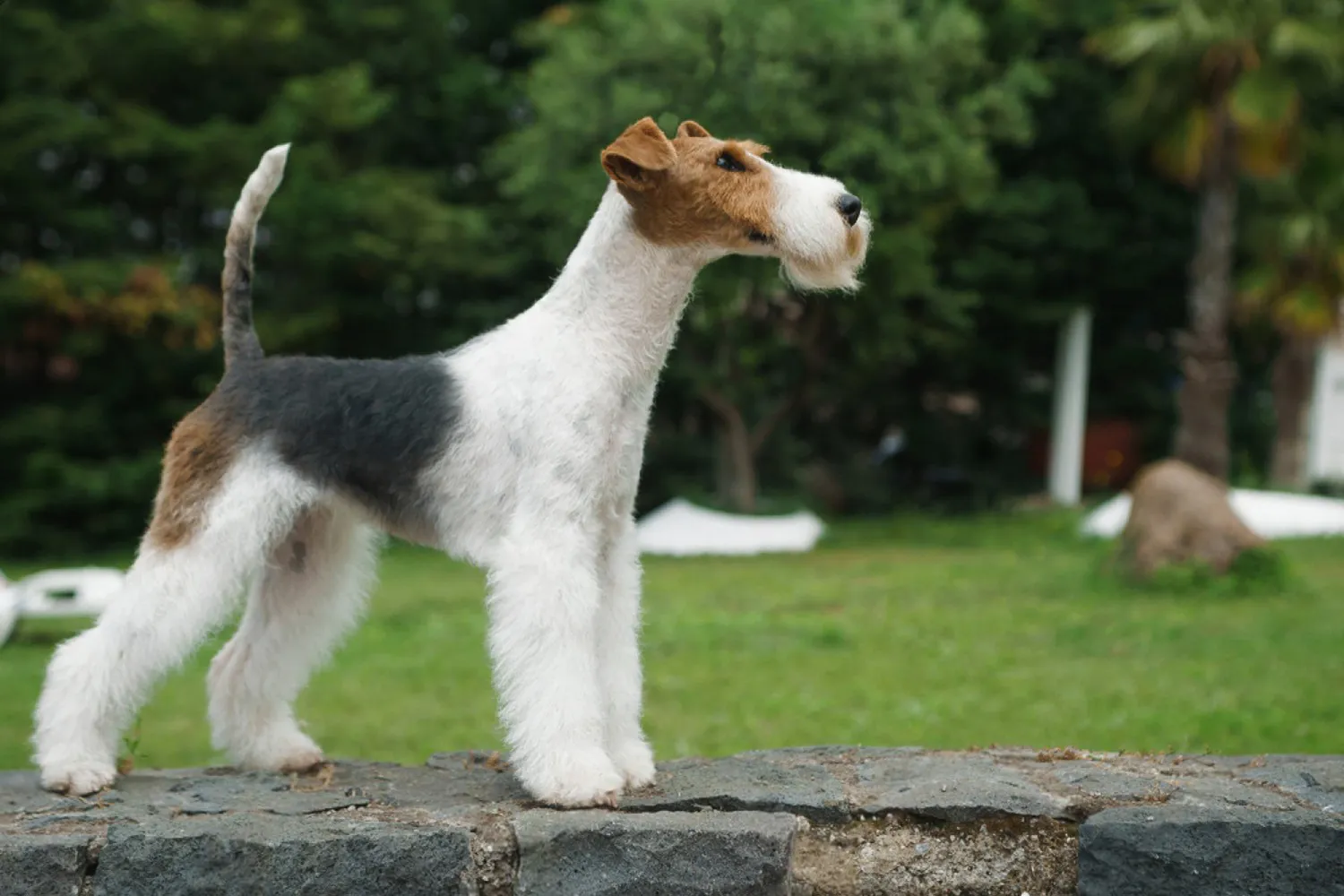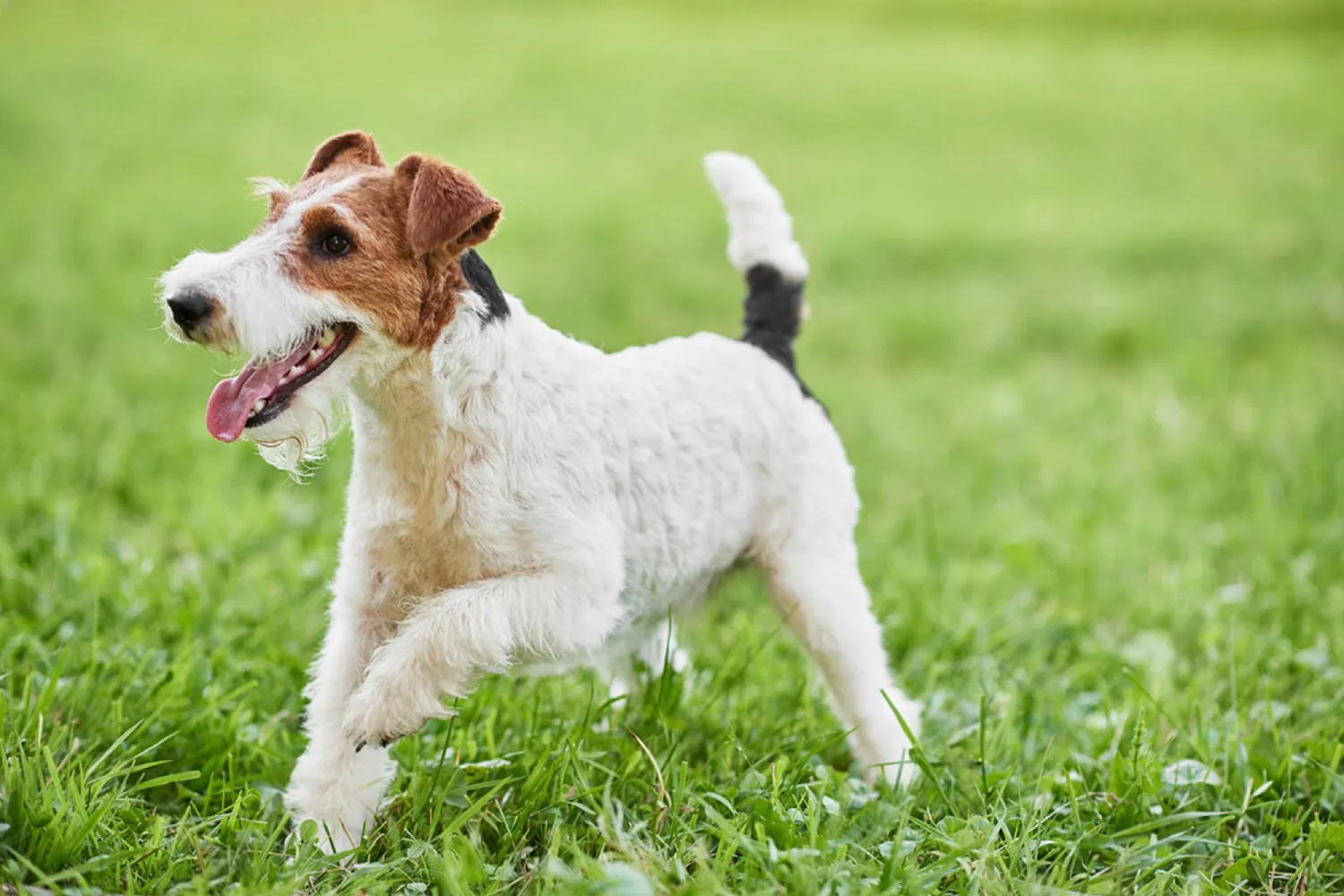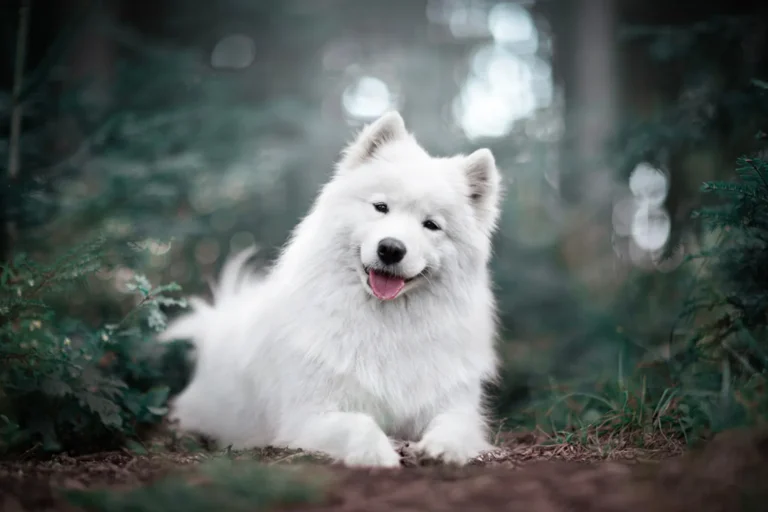
You’ve found your Fox Terrier buddy. Pull up a chair and let’s chat about these bright eyed dynamos. Fox Terriers come in two coats Smooth and Wire but both share that same spark: clever, lively, and always a step ahead of you. My neighbor’s Wire Fox, Tilly, can spot a squirrel three blocks away and still have time to strike a pose for a photo. They’re small enough to tuck under your arm, yet big in personality bold, charming, and occasionally a little mischievous in the best way.
Daily life with a Fox Terrier is fun and fast paced. Plan on brisk walks and play sessions; mine loved a good game of fetch, but also adored puzzle toys that made her “work” for treats. Short, upbeat training sessions keep their quick minds engaged think five minutes here, five minutes there, and lots of praise. I learned the hard way to check the fence for gaps; that terrier curiosity can turn into an escape act if something interesting rustles on the other side. As for grooming, Smooth Fox Terriers are pretty low maintenance with a weekly brush, while Wires do best with regular hand stripping or a visit to a groomer to keep that crisp coat tidy. Either way, keep nails trimmed and teeth brushed, and you’re golden.
They can thrive in apartments or houses as long as you meet their exercise needs, and they’re usually wonderful with respectful kids. Just keep an eye around smaller pets prey drive is part of the terrier package. If you like a dog who makes you laugh, keeps you moving, and looks you in the eye as if to say “What’s next, partner?” a Fox Terrier might be your perfect match. I still smile thinking about the time a Smooth Fox I dog sat invented his own game: fetch with a bottle cap. Trust me, life doesn’t get boring with one of these whip smart companions.
What Is the History and Origin of the Fox Terrier?
Picture the English countryside, riders on horseback, and a small, fearless terrier darting through hedgerows this is where the Fox Terrier earned its name and reputation. Bred in England to drive foxes out of their dens so hounds and huntsmen could carry on the chase, these dogs were prized for their courage, quickness, and that classic terrier “try me” attitude. I once met an old farmer in Yorkshire who swore his Wire Fox Terrier would slip into a bramble thicket like a needle through cloth and pop out grinning with half the hedge stuck to his whiskers.
It’s an old breed with a long paper trail, too. By the late 1800s, the American Fox Terrier Club was already established, and the dogs were making the leap from the field to the show ring and then into family living rooms, where their spark and smarts made them instant favorites. There are two kinds: Smooth Fox Terriers and Wirehaired Fox Terriers. They’re built much the same, but their ancestry and coats differ. The Smooth tends to have that sleek, glossy finish, while the Wire’s coat is dense and rough, the kind of texture that laughs at weather and brambles. A breeder I chatted with in California told me her Wires always looked ready for a hike, while her Smooths looked ready for a photo shoot.
Traditionally, tails were docked, a holdover from their working days. That changed in 2007, when docking became illegal except for medical reasons or certain working exemptions. You’ll see more Fox Terriers proudly waving natural tails now and honestly, that jaunty little flag suits their cheerful, on the go personalities perfectly. If you’ve got one at home, don’t be surprised if that tail keeps time with your footsteps; mine used to drum the cabinet door every time I opened the treat jar.

What Is a Fox Terrier?
Terriers come in all shapes and personalities, and that’s half the fun of talking about them. Take the Australian Silky Terrier, for example. Some people still call them the Sydney Silky, a nod to their Aussie roots. I met one on a café patio named, of course, Sydney, who pranced around like a tiny runway model with that gleaming coat. Though they hail from Australia, Silkies have charmed their way around the globe small in size but big on confidence, like many terriers tend to be.
Then there’s the Skye Terrier, a breed with a story that always gets me. In Edinburgh, a statue of Greyfriars Bobby honors a Skye who stayed by his owner’s grave for 14 years loyalty like that sticks with you. Skyes are considered a vulnerable native breed, so if you’ve fallen for their unique look and steadfast nature, be prepared for a waiting list. A friend of mine had to register her interest and wait months, but she’ll tell you every day was worth it. There’s something about a Skye’s presence calm, dignified, and quietly funny that fills a home.
On the other end of the terrier spectrum stands the Airedale Terrier, proudly known as the King of Terriers. The largest of the bunch, Airedales come from Yorkshire, and their name is said to trace back to the old Airedale Show where “waterside dogs” strutted their stuff. They’re distinguished and undeniably handsome, with a nose that could find a crumb in a hayfield. It’s no wonder they’ve worked with police and armed forces around the world. Yet at home, they’re gentle goofs with kids and turn into devoted, loyal family members in no time. I once hiked with an Airedale who could point out every deer trail we passed, tail wagging like a metronome.
So where does the Fox Terrier fit into this lively family? Right in the sweet spot if you ask me bold, bright, and brimming with personality. There are two varieties: the Smooth Fox Terrier and the Wire Fox Terrier. Both were bred to outsmart foxes in the field quick on their feet, fearless in a tight spot, and always ready for the next adventure. Smooths wear a sleek, easy to brush coat, while Wires sport a dense, textured jacket that looks tidy with regular grooming and occasional hand stripping. I once brushed a friend’s Wire before a picnic and laughed when he immediately dashed into a hedge as if to say, “Thanks, but I’m a terrier.”
Living with a Fox Terrier is like living with a charming comedian who’s also a world-class athlete. They’re clever, eager, and a bit mischievous if bored. Daily exercise is a must think brisk walks, fetch, and little training games that make them use their brains. Short, upbeat training sessions work wonders. They’re quick learners, but consistency matters, especially for recall and impulse control. That hunting heritage comes with a strong prey drive, so supervise around small pets and keep fences secure. Mine learned “leave it” with treats and lots of praise, and it became our secret superpower on squirrel heavy routes.
Fox Terriers can thrive in apartments if their energy has a daily outlet, but they do have opinions and aren’t shy about sharing them read: they can be barky. Give them jobs to do. Puzzle toys, scent games, and trick training keep them happy and polite. With kids, they’re typically affectionate and playful, but like any terrier, they appreciate respectful handling and clear boundaries.
Choosing a terrier is really about matching energy and lifestyle. The Australian Silky brings sparkle and sass in a compact package. The Skye offers deep devotion and a rare, old world charm. The Airedale stands tall for families who want a versatile, big hearted partner. And the Fox Terrier? A mid sized spark plug with a big dog attitude loyal, lively, and unforgettable. If one has caught your eye, meet a few in person, chat with breeders or rescues, and be honest about how much time you can spend exercising and training. Do that, and you’ll have a best friend who keeps you laughing, moving, and feeling loved every single day.

Who Is a Fox Terrier Best For?
If you’re looking for a bright, cheerful buddy who keeps up with your life and your sense of humor, a Fox Terrier is an excellent pick. They’re quick learners with that classic terrier spark, which is why I often recommend them to first time dog owners who are excited to train and engage with their pup. Teach a Fox Terrier a trick once or twice, and you’ll catch them offering it before you even ask mine figured out “spin” just by watching me reach for the treat jar. As a bonus, they shed very little, so your couch won’t look like it’s wearing a sweater. I joke that my lint roller retired when a Fox Terrier moved in.
Don’t let their small size fool you they’re sturdy little watchdogs. A friend’s Wire Fox Terrier used to announce every delivery with pride at 6 a.m. We taught a “thank you” cue to let him know the job was done, and it worked wonders. They love being around their people and tend to follow you from room to room, so they thrive in homes where they’re included in daily life. Apartments are fine if they get regular exercise, and a fenced yard is a plus; these dogs have a nose for squirrels and will take off if given the chance. I keep mine on leash unless we’re in a secure area because their chase instinct is very real.
Fox Terriers make affectionate, loyal family dogs, especially in households with older children. They’re enthusiastic and a bit springy, which can be overwhelming for toddlers. Older kids who understand boundaries do beautifully with them my nephew taught our terrier “high five,” and they were inseparable. Like many small breeds, if you spoil them without setting limits, they can pick up “small dog syndrome.” A few simple rules go a long way: no jumping up for attention, no table scraps, and sit politely before the leash goes on. Consistent, positive training and early socialization keep that sharp little mind focused on the right things.
Plan on daily outlets for their energy and brains. A brisk 45-minute walk plus a game of fetch or some scent work is ideal. Puzzle toys and short training sessions help too five minutes of “find it” with hidden treats tires mine out more than a long stroll. Grooming is easy: they shed very little, and a weekly brush does the trick. Smooth coats wipe clean quickly; Wire Fox Terriers may need occasional hand stripping or a groomer to keep the coat tidy. Keep nails short and ears clean, and you’re set.
If you want an alert, low shedding, whip smart companion who adores being part of the action, a Fox Terrier is a great fit for first time owners, active singles, and families with older kids. They’ll make you laugh, keep you on your toes, and greet every day like it’s a grand adventure.

Fox Terrier Grooming and Shedding
Let’s take a look at grooming Smooth Fox Terriers and Wire Fox Terriers, because while they aren’t big shedders, they can still keep you busy with brushes and towels. Both coats tend to shed modestly throughout the year nothing like a Husky snowstorm but you’ll notice a steady trickle of hairs on your leggings or sofa if you skip brushing. My Smooth Fox once left a fine constellation of white hairs on my black jeans after a cuddle session, and that’s when I learned to keep a lint roller by the door.
The real difference is in the grooming routine. Smooth Fox Terriers are low fuss compared to their wire coated cousins: a quick once or twice weekly brush with a rubber curry or bristle brush usually keeps things tidy, and a bath every month or so (or after a mud dive) is plenty. Wipe downs with a damp cloth between baths work wonders. Wire Fox Terriers shed very little, but they’re the high maintenance ones. Their harsh, wiry coat needs regular hand stripping to stay neat and keep its texture and color usually every 6-10 weeks. You can clip the coat, but it tends to soften the texture and can make the coat look dull over time. I tried hand stripping a friend’s Wire Fox under a groomer’s guidance, and we both needed a snack break halfway through; after that, we happily booked a pro every two months. If you want to DIY, a stripping knife and a pumice stone are your best friends, plus lots of treats and patience.
Daily life grooming matters, too. Nails every 2-3 weeks, a quick ear check weekly, and teeth brushing as often as you can manage. Wire Foxes often sport adorable facial furnishings that catch crumbs keep a small towel handy to wipe beards after meals and water breaks. I like to do short, positive sessions after a walk when the wiggles are out; a lick mat with a bit of peanut butter makes nail trims and brushing feel like spa time.
And yes, like all terriers, both Smooth and Wire Fox Terriers come with a high prey drive. It’s part of their charm and their chaos. Squirrels, birds, the occasional drifting leaf… all fair game in their minds. I keep mine on a leash or a long line in open areas and practice a rock-solid recall in low distraction spots before trusting it anywhere exciting. Flirt pole play, scent games, and structured fetch help take the edge off that chase instinct. If you have small pets at home, supervision and management are nonnegotiable, and a secure yard is worth its weight in gold.
Bottom line: expect light to moderate year round shedding, easy breezy maintenance for Smooth coats, and more involved upkeep for Wire coats. With a simple routine and the right tools (and maybe a good groomer on speed dial), Fox Terrier grooming becomes less of a chore and more of a bonding ritual. Just don’t forget the lint roller and keep an eye out for squirrels.

Do Fox Terriers Bark a Lot?
The first Fox Terrier I dog sat had a doorbell alarm that could cut through a thunderstorm sharp, high, and very proud of itself. That’s pretty typical. These little dynamos are bright, bold, and bred to notice movement, so their voices come standard. Their bark tends to be high pitched and enthusiastic, which is part watchdog, part “hey, I have opinions!”
If you live in close quarters or have sound sensitive neighbors, it’s something to think about. The good news: you can shape the habit. Plenty of exercise and brain work goes a long way think brisk walks, scent games, and short training sessions scattered through the day. I like to teach a calm “quiet” cue by rewarding those tiny pauses between barks, then gradually asking for longer silence. It’s not about shutting down their personality; it’s about teaching an “on/off switch.” Blocking window views, using white noise, and practicing doorbell drills (ring, two barks, quiet, treat) can turn chaos into a neat little routine. My friend’s Fox Terrier now gives exactly two alerts and then trots over for her paycheck like a pro.
Expect some vocal opinions when squirrels appear, packages arrive, or boredom creeps in. Puzzle feeders, snuffle mats, and a few minutes of trick training before you hop on a work call can prevent the “I’m bored, so I’ll narrate” soundtrack. And start young if you can socialize to everyday noises and reward calm curiosity. Bottom line: Fox Terriers do bark, and the pitch is no joke. But with consistent training and a bit of management, you can channel that spark into a quick “heads up” instead of a running monologue. If you want a silent roommate, this might not be your match. If you appreciate a spirited little sentinel, they’re a joy.

What is the average weight and height of a Fox Terrier?
Fox Terriers are compact little dynamos. On average, females weigh about 6.5 kg (around 14 lb) and males sit closer to 7.5 kg (about 16.5 lb). For height, you’ll usually see females standing between 24 and 25 cm at the shoulder, and males ranging from 27 to 33 cm (roughly 10.5 to 13 inches). When people say “at the shoulder,” they mean the withers the highest point of the shoulder blades which is the standard spot for measuring a dog’s height.
Of course, every Fox Terrier has their own style. Some are a touch leggier or more muscular, depending on genetics and activity. My friend’s terrier, Pickle, hovered right around 7.6 kg and about 30 cm tall like a coiled spring with whiskers. If you’re curious about your dog’s stats, grab a tape measure and a hardcover book: have your pup stand square against a wall, rest the book flat on the withers, mark the spot, then measure to the floor. For weight, I do the bathroom scale trick step on with and without the dog and subtract though a handful of treats usually helps with the “stay still” part.
If your Fox Terrier falls a little outside these averages, don’t panic. Age, fitness, and body type all play a part; puppies shoot up in height first and fill out later. I aim for a “you can feel the ribs without poking” rule of thumb and adjust food or exercise if things get a bit snug around the collar. And if you’re ever unsure, a quick chat with your vet will tell you whether your dog is just uniquely themselves or needs a tweak to their routine.
https://en.wikipedia.org/wiki/Fox_Terrier/

Are Fox Terriers Easy to Train?
In the right hands, these clever little dynamos pick up new cues fast. Fox Terriers are bright, curious, and love having a job to do, which makes training satisfying when you keep it fun and focused. I once taught my friend’s Wire Fox Terrier to “touch” a target with his nose in just two afternoons using a clicker and tiny bits of cheese he strutted around like he’d won a medal.
They’re also great with kids when everyone learns the rules. I like to get children involved with simple tasks asking for a sit before tossing a toy, or playing hide and seek around the house so the dog practices recall. That structure helps the dog and the kids, and turns training into a family game. With that kind of teamwork, Fox Terriers make lively, affectionate companions.
Now, the terrier streak is real. They can be stubborn when it suits them, so a firm yet gentle approach is key: short sessions (5-10 minutes), clear boundaries, and consistent follow through. Use high value rewards, switch up the exercises to keep their brain buzzing, and end on a win. If they dig in their heels, don’t escalate reset, make it easier, and try again. With patience, humor, and steady leadership, you’ll unlock that brilliant little mind and have a well mannered buddy to boot.

Fox Terrier Temperament: Big Personality, Endless Zip
If you’ve ever met a Fox Terrier, you know they bring the kind of spark that makes a room feel brighter. They’re energetic, friendly, and wonderfully independent like a big dog wearing a compact suit. Mine used to turn morning walks into mini parades, greeting neighbors as if he were the mayor. They thrive in a home environment where they can be part of the action, and they’re incredibly loyal. Best of all, that playful, puppy like vibe doesn’t fade with age. I once dog sat a 10-year old Fox Terrier named Pip who still chased tennis balls with the same gusto as a six month old then curled up like a little space heater beside me for a nap.
One thing I adore about this breed is how tuned in they are to their people. They read your mood like it’s their favorite bedtime story. On a gloomy day when I was under the weather, my Fox Terrier voluntarily dialed back his zoomies and tucked himself under the blanket with me, peeking out every so often to check on me. This sensitivity makes them excellent companions, and it also means they respond beautifully to positive reinforcement and calm, consistent routines. Keep their brain busy short training sessions, puzzle feeders, scent games on rainy days. A tired Fox Terrier is a happy Fox Terrier.
Now for the spicy side of that big personality. These dogs truly don’t realize how small they are. They’ll puff up at any dog, any size, as if they’re the sheriff in town. On walks, I keep my head on a swivel and watch for those telltale signs forward weight, stiff tail, laser focus then redirect with a cheerful “let’s go!” and a quick turn. Early socialization is your best friend, along with solid recall and loose leash skills. I like a well fitted harness and, in busy areas, a long line rather than off leash freedom. And because they’re terriers, that chase instinct is real; squirrels and pigeons tend to bring out their inner athlete.
About the noise… yes, Fox Terriers enjoy hearing their own commentary. Doorbells, leaves, existential thoughts they’ll announce them all. You can absolutely manage this. Teach a “quiet” cue, reinforce calm when the world is boring, and set up your space to help: frosted windows to reduce triggers, a white noise machine for nap time, and a stuffed Kong before visitors arrive. Regular exercise and mental work go a long way to curb the soundtrack.
They’re also not fans of long solo hours. Separation anxiety can crop up, so practice independence training early: short, low key departures, a safe crate or cozy pen if they love it, and sturdy chew projects to keep them content. If your schedule is hectic, a dog walker or a couple of daycare days can make a world of difference. For the right family one that loves laughter, movement, and a bit of terrier spice a Fox Terrier is pure joy wrapped in a small, wagging package.

Fox Terrier Health: What to Watch For
Every breed has its quirks, and the lively Wire and Smooth Fox Terrier are no exception. While most are sturdy little dynamos, they can be more prone to a few issues: dermatitis, dermoid sinus, deafness, eye problems, and some leg and knee disorders. I always tell new Fox Terrier owners to learn the early signs. With dermatitis, for example, think itchiness, red patches, or those pesky hot spots after a muddy romp. My neighbor’s Wire Terrier would flare up if we skipped a good rinse after rolling through tall grass, so a gentle, dog safe shampoo and regular brushing made a big difference. For Wires, proper hand stripping helps keep the coat healthy; for Smooths, a consistent brushing routine and clean bedding go a long way. A diet that supports skin health and staying on top of fleas and environmental allergens can help, too.
Hearing and vision deserve attention as well. Deafness can be tricky to spot at first does your dog ignore you, or are they simply engrossed in a squirrel fantasy? A reputable breeder may screen for hearing, and your vet can do a simple test if you suspect something. I trained one foster terrier with hand signals “just in case,” and it turned out to be a handy skill even after we confirmed normal hearing. For eyes, schedule regular checks and watch for cloudiness, squinting, or bumping into things at dusk subtle changes add up.
As for legs and knees, keep an eye on any skipping gait, reluctance to jump, or sudden “bunny hopping.” Small, springy breeds can be prone to kneecap and hip related quirks, so ask your vet to check those joints during annual exams. Keeping your Fox Terrier lean, nails trimmed, and muscles strong with steady, low impact exercise helps protect those agile limbs. And one more tip I learned the hard way: slick floors plus zoomies equal slips, so a few rugs can save both joints and your nerves. Regular vet visits, a bit of prevention, and early attention to small changes will keep your Fox Terrier feeling bold, bright, and ready for the next adventure.

What Is the Lifespan of a Fox Terrier?
These bright eyed dynamos tend to pack a lot of living into their years. Most Fox Terriers average around 11 to 14 years, and in my experience, many settle happily into their teens with the right care. They’re lively, clever, and incredibly affectionate my friend’s Wire Fox, Tilly, was still outpacing us on short hikes at 12, tail going like a metronome.
If you want your Fox Terrier to thrive, think routine and outlets. Daily exercise is non negotiable two brisk walks plus a good game of fetch or a backyard scavenger hunt does wonders. I rotate puzzle toys and little “find it” scent games after dinner to keep that busy brain satisfied. A bored terrier will invent hobbies, and you may not love them. Keep an eye on food portions, too; these guys can be enthusiastic eaters, and extra weight is hard on their joints.
Regular vet checkups, dental care, and parasite prevention help them age gracefully. For grooming, a weekly brush keeps Smooth Fox coats sleek; Wire Fox coats benefit from regular hand stripping or a groomer who knows terriers. As they ease into their senior years, I add softer bedding, shorter but more frequent walks, and ask my vet about joint support. Little changes like a warm spot by the window for afternoon naps make a big difference. With consistent care and plenty of play, a Fox Terrier will fill your home with energy and love for many good years.
How much should a Fox Terrier be fed?
For most adult Fox Terriers, twice a day is the sweet spot. Breakfast and dinner keep their energy steady and their tummies from rumbling. I split their daily calories between those two meals, and it’s made a world of difference no more early morning “I’m starving!” stares or bedtime snack raids. Puppies are a different story and usually need smaller, more frequent meals, but for grown terriers, two meals is a good rhythm.
How much goes in the bowl depends on your dog’s age, weight, and how busy they are. A terrier who spends the afternoon chasing squirrels in the yard will need more than one who prefers the couch and a cozy blanket. I like to start with the feeding guide on the food bag or a vet’s calorie recommendation, measure with a proper scoop, and then adjust a little each week. You should be able to feel ribs with light pressure and see a nice waist from above. One winter I noticed my guy was getting a bit barrel shaped after too many rainy day naps cutting back a smidge and adding a few extra laps around the block got him right back on track.
If you like to share people food now and then, there are some great options that are healthy for Terriers: lean beef, pork, turkey, chicken, sardines, salmon, and cooked eggs. Keep it simple plain, cooked, and unseasoned, with no skin, bones, or rich sauces. My Fox Terrier goes wild for “sardine Sunday,” and I swear his coat gets shinier after a week or two. Eggs make an easy topper too; I’ll scramble one without butter or salt and mix it into dinner. Just remember that all extras count toward the day’s calories, and I try to keep treats to about 10 percent so I don’t accidentally overfeed.
A few practical tips from life with a food loving terrier: stick to a routine feeding time, use a measuring cup every meal, and consider a puzzle bowl if yours inhales food like a vacuum. Fresh water at all times, slow transitions when you change foods or proteins, and a quick check-in with your vet if you’re unsure about exact calories will keep you on the right track. Fox Terriers are energetic little athletes fuel them well, and they’ll repay you with zoomies, cuddles, and that classic terrier grin.
Fox Terrier FAQs
What is the difference between a Fox Terrier and a Jack Russell?
Side by side, a Fox Terrier is just a touch bigger and a bit heavier than a Jack Russell. You’ll also notice the face shape: Jack Russells tend to have a more pointed muzzle, while Fox Terriers look a little softer around the nose. Another easy clue is the coat. Fox Terriers come in two types Wire Fox Terrier and Smooth Fox Terrier while there’s just one Jack Russell. The Wire has that tousled, textured look that I’ve always thought makes them appear ready for adventure, and the Smooth is sleek and shiny. In general, Fox Terriers are a bit less muscular than Jack Russells, who often carry more compact, springy muscle.
At the dog park, my friend’s Jack Russell zips around like a little rocket, all power and agility, while my neighbor’s Wire Fox has this jaunty, bouncy trot that turns heads. Both are bright and energetic, but they wear it differently think sprinter versus stylish marathoner.
Are Fox Terriers ideal for a first time dog owner?
It depends on your lifestyle. If you’re ready for a high energy companion who needs daily exercise and mental games, a Fox Terrier can be a joy. Plan on brisk walks, a few rounds of fetch, and plenty of puzzle toys. I’ve had great success with short, fun training sessions throughout the day five minutes here and there goes a long way. If you prefer a low key couch buddy without much training, they might feel like a handful. My advice: set a routine early, keep training positive and consistent, and consider a beginner obedience class. A flirt pole and a good snuffle mat can be your best friends on rainy days.
Are Fox Terriers hypoallergenic dogs?
Yes, Fox Terriers are considered hypoallergenic. Many allergy sufferers find they do well with them, especially with regular grooming. For Wires, keeping the coat hand stripped or neatly maintained helps minimize loose hair, and Smooths appreciate a weekly brush to keep dander down. I always suggest meeting a Fox Terrier before committing everyone’s allergies are different and using simple tricks like a HEPA filter and frequent vacuuming to keep the home comfy.
Are Fox Terriers cuddly?
Absolutely. After they’ve burned off their zoomies, they’re world-class snugglers. My friend’s Wire Fox turns into a warm, wiry throw blanket by evening, snoring softly with his head on your knee. Give them their playtime, and you’ll earn those melt into your arms cuddles every night.
Disclaimer:
This article is for informational purposes only and doesn’t replace professional veterinary or training advice. Always consult a certified vet or dog trainer for guidance specific to your pup.





